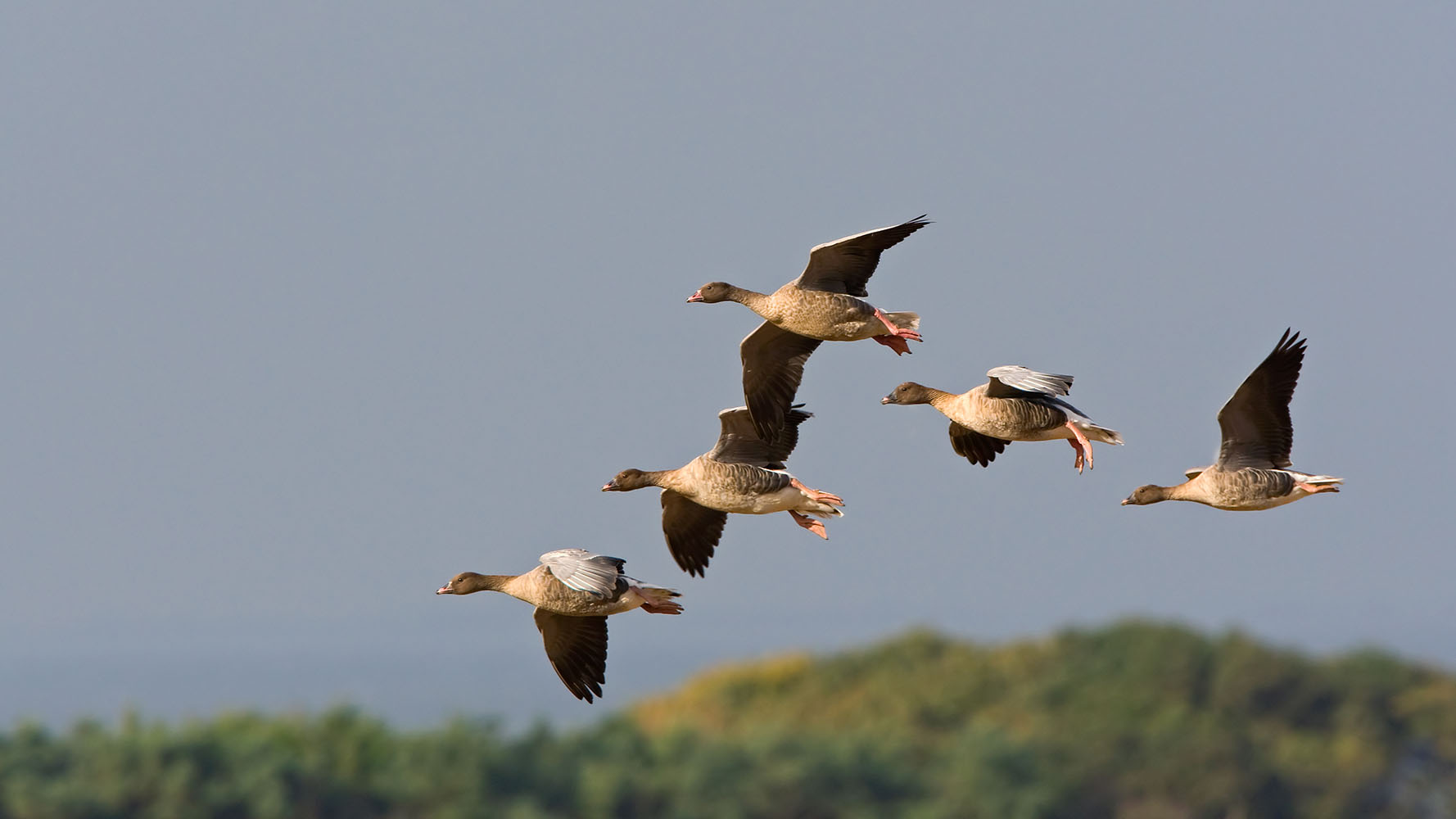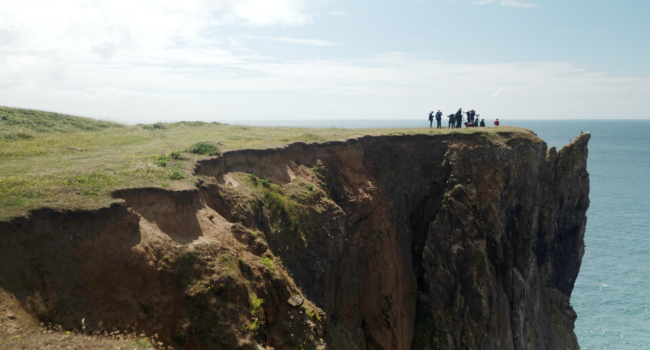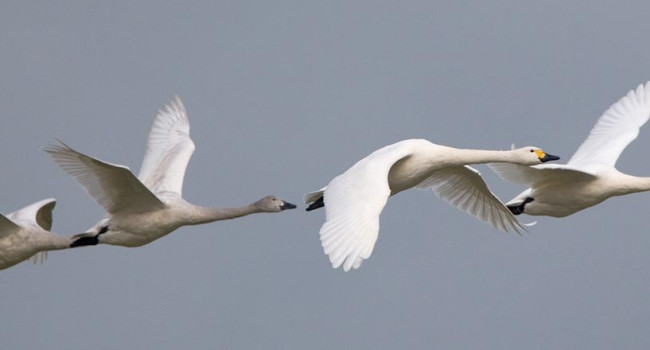
BirdTrack migration blog (8–14 September)
The lighter winds, lack of any weather fronts, and associated rain meant most species could continue their migration unaffected by the weather; birds simply didn’t need to stop and will have continued onwards and through Europe.
These same conditions are good for visible migration, with early mornings the best time to sit and watch and listen for migrating birds. Tree Pipit, Yellow Wagtail, Meadow Pipit, and the first flush of Siskins were all reported during the week. Pied Wagtails were also well reported, and these included several of this year's young, which are now dispersing away from where they hatched in search of a place to spend the winter. Small mixed groups of moulting adults and juvenile birds were found feeding together, especially on short cropped grazing meadows where they often mix with Yellow Wagtails, especially if there are cattle present.
Following the theme of last week’s blog, reports of both Whinchat and Wheatear continued to build as we headed towards their peak autumn migration period in mid September. At this time of year, both species can be seen together, as they favour similar habitats during migration time. The white-rump of Wheatear is a good identification feature when they fly away from you, and their upright stance and habit of running rather than flying can also help identify more distant birds.
The first Pink-footed Geese started to arrive last week, with small flocks noted from several sites across Scotland and northern England. The peak arrival is typically in mid October, so more and more birds will arrive in the coming weeks as they make the journey non-stop from Iceland. The entire Icelandic population of some 510,000 birds, which has been increasing each year, spends the winter in Britain, and as the population grows, the species’ wintering range is also expanding, with birds pushing further south as they search for new areas to feed and roost. Familiarising yourself with their “wink-wink” call can be very helpful in locating migrating flocks as they can fly very high and be difficult to spot on sight alone.

Looking ahead
The hot weather looks set to remain in charge over the weekend, but come Monday, a band of rain sinks south across most of Britain and Ireland, bringing with it a drop in temperatures and a return to similar conditions seen for most of the summer. As the week progresses, the wind direction swirls around, and pulses of rain come and go, predicting what species will be seen becomes difficult. The wind direction generally looks to be mainly from the west and north, with only a switch to the south as we get towards the end of the week. These conditions are not optimal for migration and will most likely result in a reduction in the number of migrant species on the move.
The more settled conditions over the weekend should see some species take advantage of the light winds. Meadow Pipits, Grey Wagtails, Siskins, and both Swallows and House Martins will be the main species to look out for. Any areas of trees, hedges, and scrub will also be worth checking for Chiffchaff, Blackcap, and Whitethroat, as well as the occasional Redstart, Spotted Flycatcher, or Whinchat.

North-easterly winds at the start of next week could see some more Pink-footed Geese arriving across northern parts, and possibly just the odd one or two flocks of early-arriving Whooper Swans. Many a twitcher will be hoping these same winds deliver a Cliff Swallow or two. This North American relative of our Swallow has been seen in unusually high numbers in Newfoundland lately, and a minimum of 21 birds were also noted across Iceland during the last week. This species has only been recorded in Britain and Ireland on a handful of occasions, with the last one being seen in 2019 in Skye, Highlands.
Into Wednesday, the winds continue to blow from the north and could provide some good seawatching conditions along the North Sea coasts. Sooty Shearwater, skuas, and Sabine’s Gull will be the target for many given the time of year, amongst the commoner Gannet, Kittiwake and Fulmar, which are also on the move at this time of year. It's also worth looking out for the first Red-throated Divers of the year as they push further south to their traditional wintering areas. Their habit of holding their neck slightly lowered can help identify more distant birds.
Send us your records with BirdTrack
Help us track migration amidst an outbreak of avian influenza.
Submitting your sightings to BirdTrack is quick and easy, and gives us vital information about our breeding and migrating birds.
Find out more






Share this page